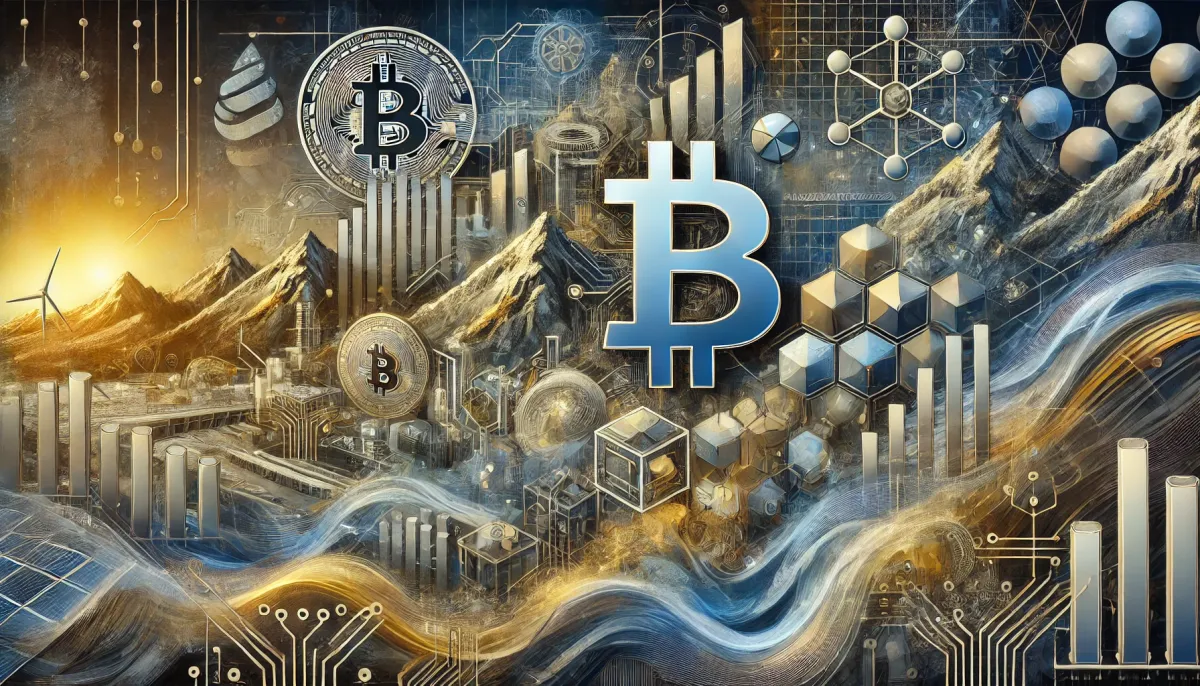Bitcoin Mining and Energy Management: Enhancing Grid Stability
On September 25, 2024, the Abundant Mines Podcast featured Medi Naseri discussing how Bitcoin mining has evolved into a sophisticated energy management enterprise.

- My 'briefing notes' summarize the content of podcast episodes; they do not reflect my own views.
- They contain (1) a summary of podcast content, (2) potential information gaps, and (3) some speculative views on wider implications.
- Pay attention to broadcast dates (I often summarize older episodes)
- Some episodes I summarize may be sponsored: don't trust, verify, if the information you are looking for is to be used for decision-making.
Summary
On September 25, 2024, the Abundant Mines Podcast featured Medi Naseri discussing how Bitcoin mining has evolved into a sophisticated energy management enterprise. The episode examined demand response, regional cost challenges in the Pacific Northwest, and future risks including quantum threats and censorship. These themes underscore the critical nexus between energy strategy and grid reliability.
Take-Home Messages
- Energy Management: Optimized energy use drives mining profitability and grid support.
- Demand Response: Flexible load curtailment enhances both cost savings and grid stability.
- Cost Challenges: High transmission and distribution costs in the Pacific Northwest demand innovative solutions.
- Security Preparedness: Proactive steps against quantum computing and censorship risks are essential.
- Integration Potential: Merging mining with data centers can unlock broader efficiencies in energy use.
Overview
Medi Naseri explains that Bitcoin mining now centers on energy management rather than merely block production, with a focus on reducing operational expenditures to boost profitability. He details how strategic energy use, particularly through demand response, transforms traditional mining operations. This evolution reflects a shift in priorities that balances technical efficiency with economic imperatives.
The conversation highlights that demand response enables miners to quickly adjust energy consumption, providing significant cost savings while contributing to grid stability. Naseri illustrates how rapid curtailment during peak periods can serve as a flexible resource for balancing supply and demand. This operational agility is key to both reducing expenses and supporting broader energy infrastructure.
Regional challenges in the Pacific Northwest, such as high transmission and distribution costs, are a major theme in the discussion. Naseri underscores that these elevated costs affect mining competitiveness and necessitate innovative energy strategies. He also explores the integration of renewable energy sources, emphasizing the potential for enhanced operational sustainability.
Looking forward, the episode addresses future risks like quantum computing threats and mining pool censorship. Naseri advocates for proactive adaptations to secure the network and ensure its decentralized integrity. He also notes the promising convergence of Bitcoin mining with traditional data centers and AI-driven compute, which could further optimize energy efficiency.
Stakeholder Perspectives
- Bitcoin Miners: Seek to lower energy costs and enhance operational efficiency while contributing to grid reliability.
- Grid Operators: Aim to balance supply and demand by integrating flexible loads into the energy system.
- Data Center Operators: Explore collaborative models that merge compute optimization with energy management.
- Regulators and Policymakers: Focus on ensuring market transparency, fair pricing, and secure network operations.
- Renewable Energy Providers: Benefit from flexible demand response, which aids in stabilizing and optimizing renewable integration.
Implications and Future Outlook
The evolution toward advanced energy management in Bitcoin mining implies that operational efficiency will increasingly dictate profitability. Improved demand response mechanisms could significantly enhance grid reliability and encourage further innovation in energy procurement strategies. This shift may also stimulate investment in technologies that optimize both energy consumption and cost structures.
Technological risks such as quantum computing and potential censorship by mining pools call for urgent, coordinated responses. Adapting encryption methods and redesigning block formation protocols are critical to sustaining network integrity. Such proactive measures will help safeguard the trustless and decentralized nature of the Bitcoin network.
The integration of Bitcoin mining with data centers and AI-driven compute presents a transformative opportunity for interdisciplinary collaboration. This convergence could lead to new models of energy consumption and operational efficiency that benefit multiple sectors. In turn, these developments may prompt policy revisions and market reforms to support a more resilient and adaptive energy ecosystem.
Information Gaps
- How can Bitcoin miners further optimize operational energy costs to maximize profit margins? This question is critical because energy management is the core driver of mining profitability, and optimized costs can unlock substantial economic benefits.
- How can demand response programs be tailored to enhance Bitcoin mining profitability? This inquiry focuses on refining operational flexibility to yield significant cost savings and ensure grid stability.
- How do high transmission and distribution costs in the Pacific Northwest impact mining profitability? Addressing this will clarify regional challenges that affect energy pricing and competitive viability.
- What proactive steps can Bitcoin miners take to prepare for quantum computing threats to encryption? This is essential given the potential long-term security risks and the need for a clear transition to quantum-resistant protocols.
- What technical solutions can prevent mining pools from censoring transactions? This question is pivotal for preserving the decentralized and trustless nature of the network, ensuring that censorship risks are minimized.
Broader Implications for Bitcoin
Strategic Reserve Potential
Bitcoin mining operations could evolve into strategic energy reserves, fundamentally altering regional energy dynamics. By leveraging demand response and flexible load management, miners might serve as critical buffers during supply-demand imbalances. This potential reshaping of energy markets could influence investment in alternative generation sources and grid modernization.
Decentralization and Network Integrity
Advances in energy management could drive innovations that reinforce the decentralized nature of Bitcoin. Enhanced technical protocols may mitigate risks of mining pool censorship, ensuring that network control remains distributed. Strengthening decentralization is crucial for preserving the trustless attributes that underpin Bitcoin’s long-term viability.
Energy Market Transformation
The integration of Bitcoin mining with data centers and renewable energy sources could catalyze broader market reforms. Such convergence may drive the development of new pricing models and incentivize investments in grid infrastructure upgrades. Ultimately, these changes could lead to a more resilient, transparent, and efficient energy ecosystem.



Comments ()